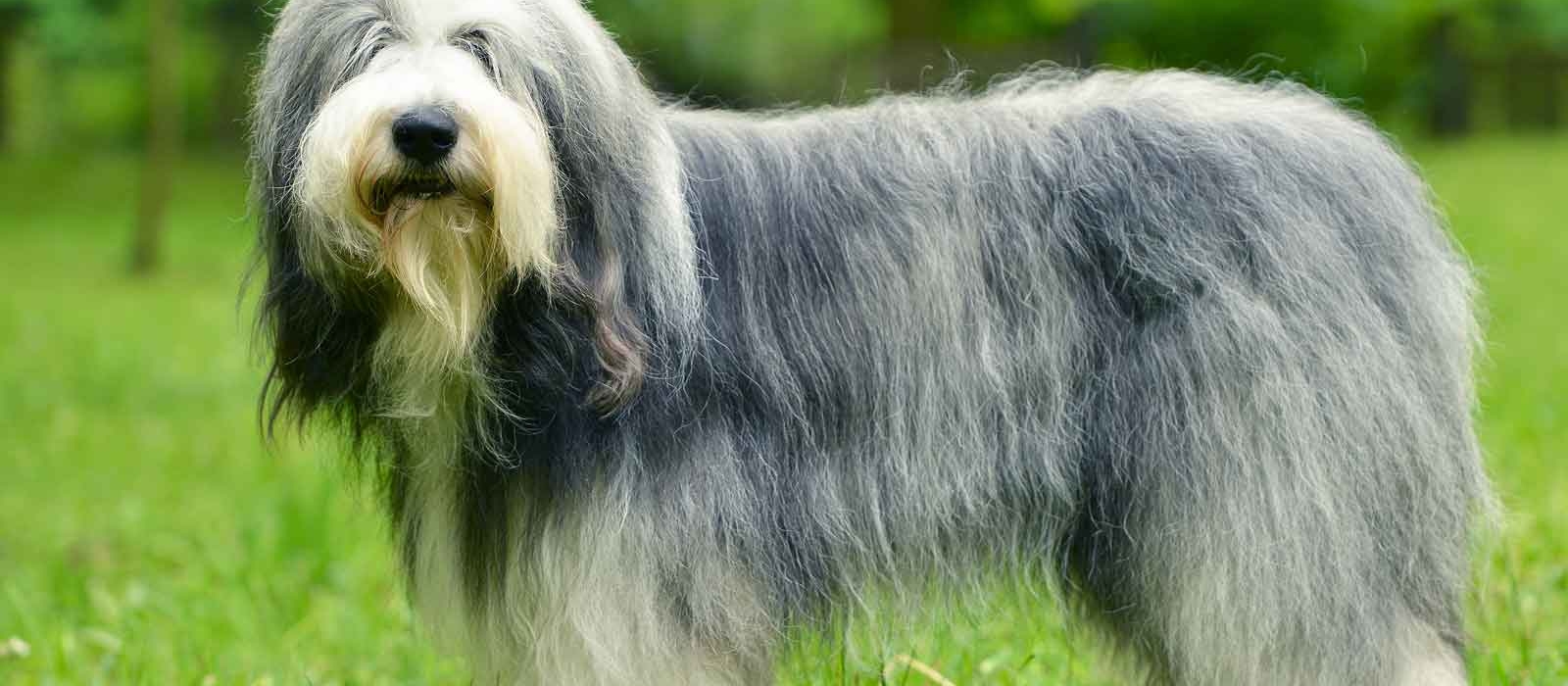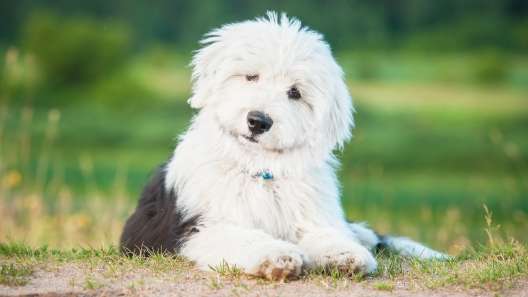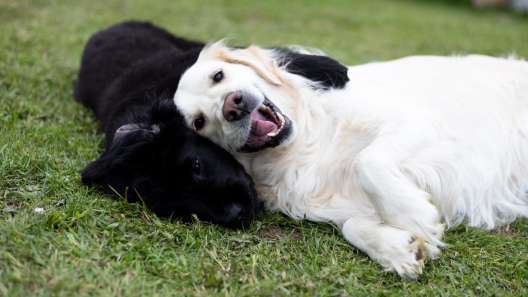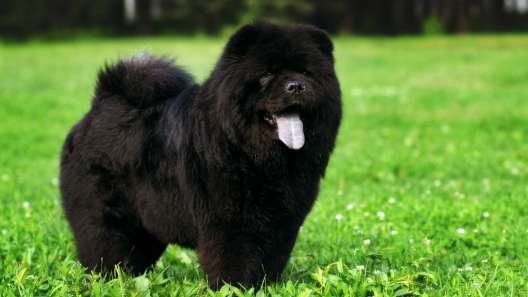-
Activity Level:
moderate
-
Shedding Level:
high
-
Grooming Level:
high
-
Trainability:
high
-
Good for Novice Owners:
high
-
Adaptability:
high
-
Kid/Pet Friendly:
often
-
Prey Drive:
low
-
Watchdog:
very alert
- Average Size: Large
- Average Lifespan: 10-12 years
- Registered?: aca, akc
Old English Sheepdog Dog Breed Information
Overview
Temperament
Adaptability
Health
Owner Experience
Grooming
Activity Level
Size
Life Span
Did You Know?
Although the Old English Sheepdog has an unmistakable and iconic appearance, one of the facts about English Sheepdogs is that the breed’s exact history is a bit of a mystery. This dog breed was developed in England and is likely a descendant of the bearded collie. Records of this beautiful, fluffy dog don’t appear until the nineteenth century.
At that time, it was named the “Bobtail”, or “Bob”, for their cropped tails. The cropping of the tail was designed to communicate that the dog was a drover, which was a dog responsible for herding sheep or cattle. This was done in order to tax the working dog.
Across the pond, the Old English Sheepdog’s popularity grew rapidly among the upper classes. Not long after being imported into the United States in the 1880s, the OE Sheepdog was being bred and shown by half of the wealthiest families in the U.S. The American Kennel Club initially recognized the Old English Sheepdog in 1888. They gained full recognition as a member of the Herding Group in 1905, a year after the Old English Sheepdog Club of America was founded.
With a face covered with long, shaggy fur and a comical, ragdoll gait, the Old English Sheepdog is a sweet and affectionate “clown.” Yet, this unique personality belies the fact that they are one highly intelligent and innately competent worker. The OE Sheepdog’s magnificent double coat makes them a staple at dog shows. The breed has also been featured as the lovable family pet in countless movies and television shows.
“Lovable” is the best all-around adjective to describe the Old English Sheepdog. It’s hard not to be enchanted by this big, fluffy, and childlike dog. They are one of the most affectionate dog breeds and are known for being curious, agile, and obedient.
Some attribute their playful disposition to the fact that the OE Sheepdog experiences a prolonged adolescence until about three years old. Well-socialized, these dogs are known to get along well with children, other dogs, and other pets. With a reputation as one of the kid-friendly dog breeds, they are often a perfect family dog, sometimes referred to as the “nanny” because of the role they take on with children.
These dogs bond especially intensely with their families and can experience separation anxiety with prolonged absences. Although they will be protective of their family, the Old English Sheepdog is no real watchdog. They’ll bark to alert you, but are usually more interested in making friends. And, despite their hard-working lineage, OE Sheepdogs can be couch potatoes if you let them.
The Old English Sheepdog is a surprisingly adaptable dog. They are comfortable indoors and make a very good house pet. Their first priority is being with their human family. They thrive in homes with yards where they can wander and run. They can also adapt to apartment living provided they get enough daily attention, mental stimulation, and exercise.
Due to their intelligence, curiosity, and outgoing nature, the OE Sheepdog requires stimulation. This makes them especially good at agility, flyball, and other herding-type activities. Although the Old English Sheepdog can overheat pretty quickly, they are sturdy in very cold weather. In fact, they’re known as one of the dog breeds that love winter, and tend to enjoy playing and lying in snow.
Potential health concerns to be aware of in Old English Sheepdogs can include cataracts, progressive retinal atrophy, hip dysplasia, deafness, cardiac anomalies, and autoimmune thyroiditis.
Cerebellar ataxia and primary ciliary dyskinesia are two deadly diseases that used to affect some dogs, but there are now DNA tests available to avoid passing carriers for them. DNA tests are also available to screen for exercise-induced collapse as well as drug sensitivity. Good breeding practices and the health of the parents make a big difference in the health of Old English Sheepdog puppies.
Responsible breeders will screen their dogs to ensure they are not passing hereditary or preventable issues to puppies, so don’t be afraid to talk to the breeder about the genetic history of the parents and to ask to see relevant health clearances. The Old English Sheepdog Club of America recommends a DNA test for exercise-induced collapse (EIC), a hip evaluation, an ophthalmologist evaluation, and a thyroid evaluation.
Old English Sheepdogs are intelligent dogs that pick up on things quickly and are eager to please. This makes them highly trainable dogs that are a good fit for owners of all experience levels. They do get bored with too much repetition, so it’s important to keep training interesting for them and keep your dog engaged during training sessions.
Old English Sheepdogs are one of the fluffiest dog breeds and are known for their thick and voluminous coat. These dogs will shed moderately year-round and heavily as seasons change. If maintaining a full coat, you will need to brush down to the skin at least weekly to remove tangles and prevent mats. Keeping your OE Sheepdog in a shorter “puppy trim” can be an option, but you will still need to brush them a few times a week to keep their coat tangle-free and groom them regularly to maintain the clip.
In addition to coat care, you will also need to take care of your Old English Sheepdog’s nails, ears, and teeth. Once or twice monthly nail trims are usually sufficient to keep nails from growing too long. Weekly ear checks, with careful cleanings as needed, can help prevent ear infections. Brushing teeth every day, in addition to cleanings at the vet when needed, is a good foundation for doggie dental care that helps prevent painful dental disease later in life.
The Old English Sheepdog’s activity level is an interesting dichotomy. They are bred for hard work, agile movements, and energetic pursuits. But, they are also known to comfortably do nothing around the house when nothing is going on. As the OE Sheepdog ages, they prefer to be a bit on the lazy side.
Regular walks plus some playtime and other activities throughout the day are usually enough for these dogs, but they may be up for more if you lead a more active lifestyle. These dogs are easily trained and maintain close bonds with their humans. Therefore, they will often follow the lead of the family and keep pace with whatever their humans are up to. In short, the OE Sheepdog is inherently energetic and requires regular exercise, but also knows how to chill out and enjoys relaxing when it’s appropriate to do so.
Fully-grown Old English Sheepdogs usually stand 21+ inches tall and weigh 60-100 pounds. Females tend to start at 21 inches tall and weigh 60-85 pounds on average, while males tend to start at 22 inches tall and weigh 80-100 pounds.
Old English Sheepdogs generally live for 10-12 years on average.
The Old English Sheepdog has a supporting role in Disney’s The Little Mermaid and 101 Dalmatians. In The Little Mermaid, Prince Eric’s dog is an Old English Sheepdog named Max. In 101 Dalmatians, an OE Sheepdog named Colonel assists with the rescue of the Dalmatian puppies. These are also some Disney-inspired dog names that can work for any breed.









